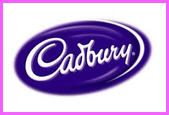
Ice Cream Fun and Facts
The Flake chocolate bar itself was first developed in 1920. An employee of Cadburys noted that when the excess from the moulds used to create other chocolate bars was drained off, it fell off in a stream and created folded chocolate with flaking properties. In 1930, Cadbury started producing a smaller version of the standard Flake bar especially for ice cream cones.These were marketed under the name 99 Flake and sold loose in boxes rather than individually wrapped like the traditional Flake.
The 99
The origins of the name are uncertain. One claim is that the '99' was coined in Portobello
Scotland, in 1922, by the Arcari family, Rudi Arcari's father Stephen came up with
the idea not long after opening the shop in 1922. He would break a large 'Flake"
in half and stick it in an ice cream. A Cadbury's rep took this idea to his company.
The rep asked Arcari what he called it, and he gave it the name 99 simply because
the shop was sited at 99 Portobello High Street. The idea spread locally, then further
afield. Another possibility, generally discounted is that it was named by Italian ice-
The Cadbury's website says that the reason behind the Flake being called a 99 has been "lost in the mists of time" although it also repeats an article from an old Cadbury works paper, which states the name came from the guard of the Italian king which consisted of 99 men and "subsequently anything really special or first class was known as 99
The biggest ice-
The most popular flavour by far is Vanilla, followed by Chocolate, Strawberry and Neapolitan
Many say that the first ice-
Britain is Europe’s third biggest consumer of ice-
This amount of indulging is dwarfed by the American average of 21 litres!
The ice-
More ice-
The average number of licks to polish off a single scoop ice-



